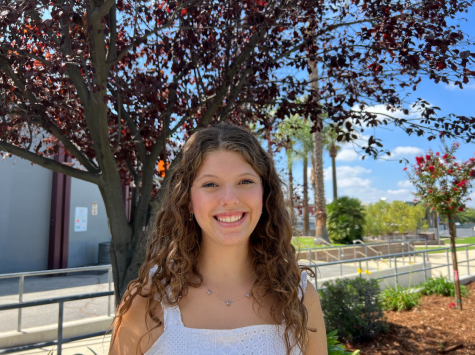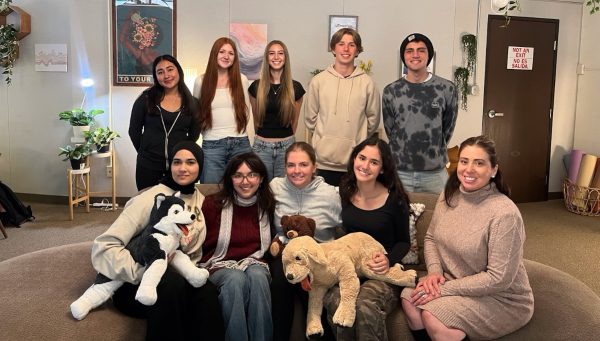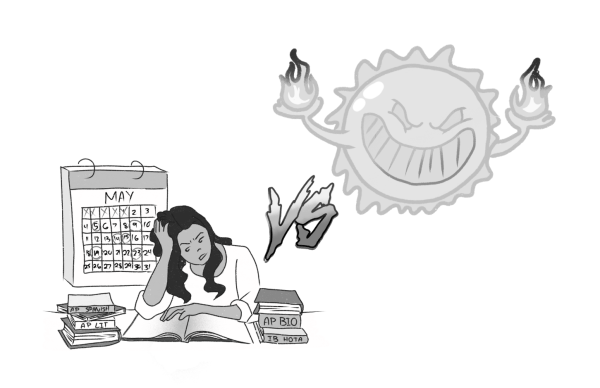Special Education during the pandemic: what changed?
Last March, the unprecedented transition from in-person to online schooling placed all educators in a peculiar and difficult circumstance. However, this unexpected shift presented even more unique challenges for those who teach or attend special education classes. Special education teachers provide differentiated instruction, meaning they deliver academic instruction based on the individual needs of each student. With online schooling, it has become difficult to provide or receive this unique instruction, and find what specific adjustments are needed for every student. To combat these unparalleled challenges, special education educators had to make adaptations to their methods of teaching.
Ruth Ojeda, the co-chair of the CHS Special Education Department, found the initial transition to distanced learning to be challenging for both her fellow educators and students. Considering most special education teachers had very minimal familiarity with teaching online, it was strenuous to become acclimated with it in such a time constraint. This struggle to adapt was also shared by students, dampening their motivation to continue to learn online.
“March was a rough patch for all our students,” Ojeda said. “It was hard to keep students engaged and participating.”
Luckily, teachers went into this new school year with a newly-found sense of preparedness and optimism. Unlike the previous semester, they now had the entirety of summer to prepare for distance learning, which included receiving technology training. This special training allowed teachers to learn how to navigate and best utilize Zoom, Canvas, and other important online platforms for the upcoming semester. Due to this, teachers were able to identify necessary adjustments needed to make lesson plans and assignments better fitted for an online learning environment. Ojeda and the rest of her department’s goal was to implement the normalities of in-person schooling, while also remaining flexible as students continued to adapt to changes. For instance, Ojeda continues to teach from her physical classroom and use the whiteboard, just as she would any other school year. Flexibility wise, she allows students to submit assignments on whatever platform they feel most comfortable using, and is very lenient with students entering Zoom late. This method has proven to be successful, as her department has seen extensive growth in their student’s engagement and productivity since the beginning of the new semester.
In regards to differentiated instruction, special education educators communicate more frequently with students and parents to get a gauge as to what learning adjustments need to be made. If a teacher notices a student is struggling with managing their workload, absorbing material, or getting to class on time, they will check-in and decide what additional support is needed. Additionally, students who worked with special education instructional aides in the past can now continue to meet with them via Zoom.
Though most students have adapted quite well this semester, many struggled with its lessened social aspect. While students who find socialization draining enjoy the more quiet nature of online schooling, Ojeda has found that the majority of her students miss the social interaction found in a typical classroom environment. They miss the little, but treasured parts of their day, like greeting classmates in the mornings, and chatting with friends while walking to class during the passing period.
“I miss the fact that students are unable to freely attend my class, to either talk with me, or talk with each other,” Odjeda said. “I know the in-person social aspect is missed by myself, as well as many students.”
Though it is difficult to recreate these particular social experiences of in-person schooling, teachers put forth a constant effort to create a socially interactive online environment. In a time of such stress and uncertainty, engaging with others is key to remaining healthy physically and emotionally. Ojeda, along with her fellow educators, encourage any students to join their Zoom outside of class time, whether they wish to speak with them or to be put in a breakout room with friends to catch up.
For students with special articulation and language needs, socialization is not only a principal for emotional health, but also their education. Rachel Lynch, who is a speech therapist at El Roble and CHS who works with both verbal and non-verbal students, initially had concerns regarding regression in her student’s communication skills. Last semester, she had to provide students supplementation through packets and strictly other asynchronous activity, rather than live sessions. These at-home activities relied heavily on assistance from parents, who already had enough chaos navigating through quarantine on its own. Lynch worried that the purely asynchronous supplementation may not be sufficient in helping improve students’ speech and communication skills.
“Not knowing what support to provide my students with on such short notice was scary,” Lynch said. “For some of our students, the only time they practiced speech was during direct therapy.”
The concern of regression has significantly decreased this current semester, as Lynch now has the proper online resources to schedule and hold regular meetings with her students. She makes an effort to make her online sessions as similar to in-person as possible by using similar learning activities. Since speech therapy is planned around a student’s individualized education program (IEP) goals, every lesson is unique. Common practices Lynch utilizes online with her students are roleplay, online games, watching and discussing speech production, and other language-heavy activities. During a typical school year, students would attend group speech sessions, where they could practice using their communication skills to converse with others. Though Lynch still holds these group meetings over Zoom, the number of student attendees is often less than what is expected. She now has a variety of group activities prepared, and adapts based on how many students attend.
Both Lynch and Ojeda are apprehensive in regards to returning back to school in a phase two distanced learning model, which would be a hybrid of online and in-person schooling. Ojeda is concerned about the possible health threat in-person schooling would present to her students, many of whom are at high-risk. Lynch worries as to how it would impact her already chaotic scheduling, since her time frame for meeting with students would be lessened. Though both want the normalcy of in-person schooling, they feel that until it is safe to return to campus in a phase three model, in which all schooling would occur in-person, it would be beneficial for their students to remain online. For now, they applaud the willingness to adapt and the perseverance of their students and fellow educators during this unprecedented time.
Hello there! Our goal is to provide relavent, engaging journalism for readers of all ages. Your donation will support the student journalists of the Wolfpacket at Claremont High School, and will allow us to purchase equipment, print our monthly issues, and enter in journalism competitions. We appreciate your consideration!

Melina Tisopulos is a senior and the Editor-in-Chief of The Wolfpacket. Melina loves to write and intends on studying journalism or English in college....







